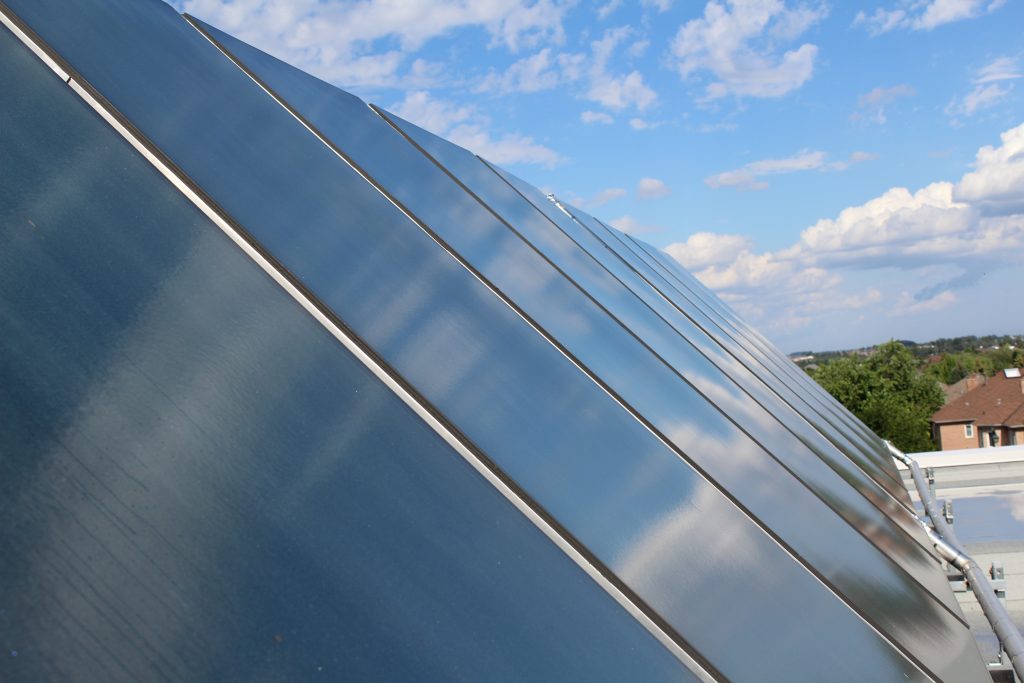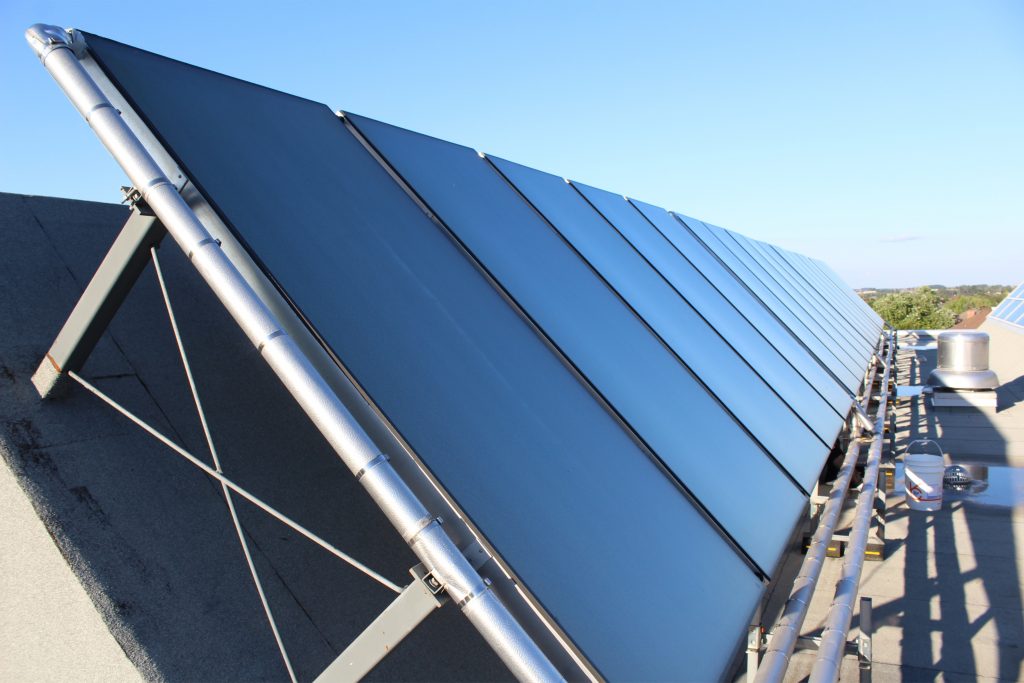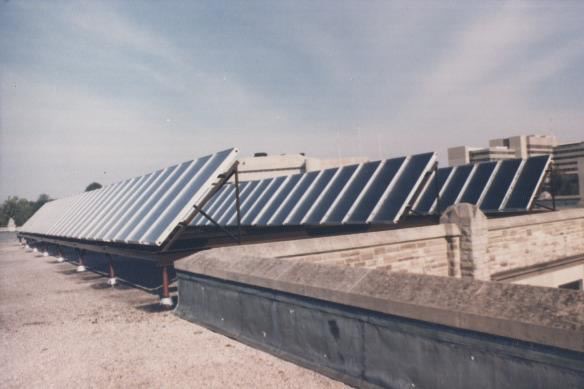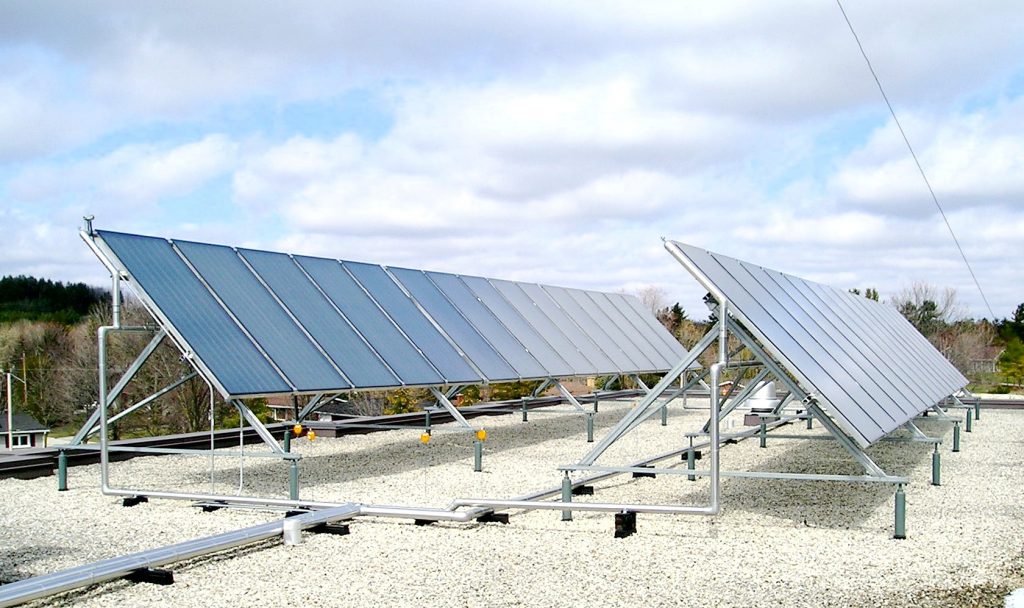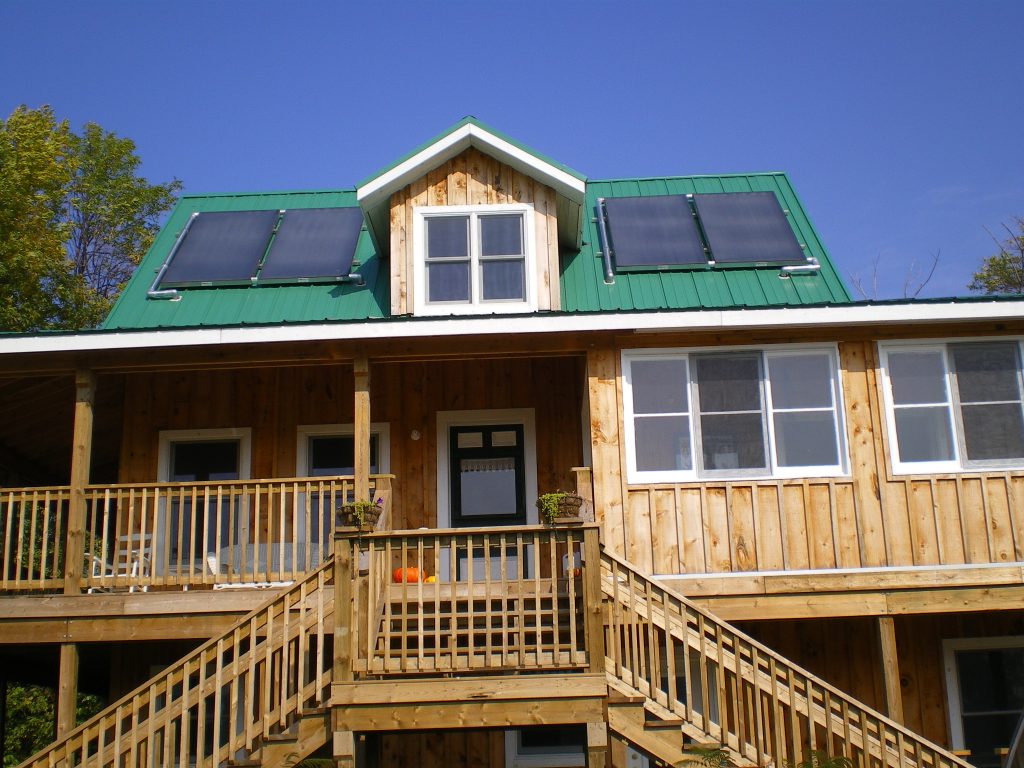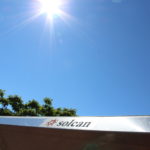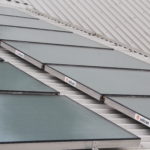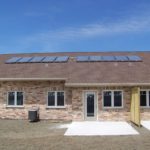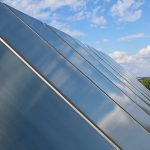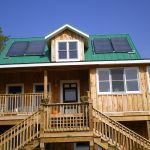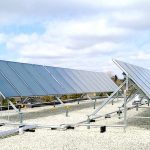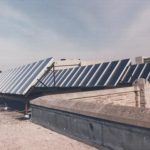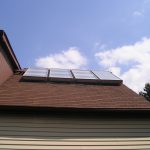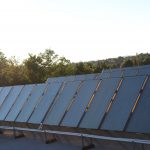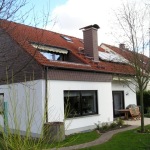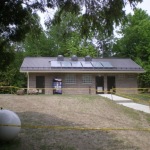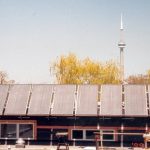Solar Thermal
If we had to pick a specialty, it would probably be solar thermal. When Solcan was in its infancy, oh, 45 years ago, we dipped our toes into the world of solar water heating (pun intended), and since then, we’ve been manufacturing our solar thermal collectors in London, Ontario and have been proud suppliers and installers for solar thermal systems worldwide!
General
To put it simply, solar thermal systems use energy from the sun to heat water that can be used in a variety of applications. Through the use of simple, proven and reliable technology, a solcan™ solar thermal system can help reduce your energy consumption from traditional energy sources. The cost of water heating can be cut by 40%-90% (varies by the season) for your domestic hot water and space heating needs. For domestic water heating, the energy displaced from electricity results in an approximate 10 year return on investment. A system life is said to be around 20 years, however, solcan™ has installed solar thermal systems that have been in operation and are still going strong for over 30 years!
How It Works
A solar thermal system uses specialized collectors that convert solar energy into to heat. Solar energy is absorbed by the collector and transferred to a heat transfer fluid that flows through the solar thermal collectors. A circulator pump is activated when there is usable heat to be gained at the collector. It moves the solar fluid from the storage tank to the collectors. The hot solar fluid can then be used in various heating loads such as hydronic baseboards, radiant floor heating, domestic hot water, pool heating etc. Once there is no longer any heat to gain from the solar thermal collectors the circulating pump will turn off. solcan™ uses a specialized controller to turn the solar circulator pump(s) on and off. The controller can also be programmed to direct the hot solar fluid to multiple heating loads. solcan™ has remote monitoring software available that will quantify energy production and gauge system performance. The monitoring equipment will also flag potential service issues. As with any mechanical system, a solar system must be correctly installed and maintained by a qualified person in order to achieve optimum performance.
Types of Solar Thermal Collectors
Flat-Plate Collector
Flat-Plate Collectors (see attachments below) have copper tubes with thin copper strips attached to the surface (the solar fin), these solar fins are attached to a larger copper tube (the header), the assembly is installed in an insulated aluminum box with a glass surface.
Our Solcan 2101 Flat-Plate Collector is the evolutionary successor to the Solcan 3001 Collector, which is no longer in production. Having 40 years of solar thermal experience behind us means our Made-in-Ontario collectors outperform the competition and are therefore a top choice nationwide.
Solcan 2101 Flat Plate Collector
Solcan 3001 Flat Plate Collector (for reference only)
Evacuated Tube Collector
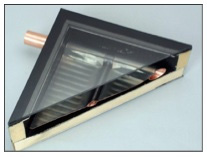
Evacuated Tube Collectors are made of two-layer glass tubes that are under vacuum (similar to a thermos). Inside the glass tube is a heat pipe and an absorber to capture the solar energy. Since connective losses to the ambient air are next to nothing through the vacuum tube, a higher temperature can be reached.
There is much debate between evacuated tube collectors and flat-plate collectors within the solar industry. Despite the fact that higher temperatures can be reached with evacuated tube collectors, studies have shown that flat-plate collectors can harness as much, or in some cases more, than the evacuated tube collector, depending on the application. An in-depth assessment of the solar thermal application would need to be done in order to determine the collector best suited for your application. You can contact us for a free assessment today!
Combination Solar Thermal Systems
Combination solar thermal systems use simple, reliable solar thermal heating technology to provide heat to various heating loads. A popular combination system design uses solar thermal collectors for radiant floor heating / space heating, domestic hot water heating and pool heating. solcan™ has designed and installed large combination systems that provide solar heat to hydronic air handlers, domestic hot water, radiant floor heating loops, indoor/outdoor pools, and hot tubs.
Combination solar thermal systems need an auxiliary heat source to provide heat when solar energy is not available. Some examples of auxiliary heat sources are an electric hot water tank, propane/natural gas boilers and hydronic wood stoves.
Mounting & Installation
The preferred location for a solar array is facing direct south in an area free of shade. Every proposed solar site will be individually assessed by solcan™ for shade, orientation, tilt and various other factors that will effect the performance of your system. With a roof-mounted array, a drainback system is typically possible since the solar fluid can drain back to the solar tank (typically located in the mechanical room).
If the roof can’t accommodate solar applications, or if simply preferred, a ground-mounted system is a great alternative option. With a ground-mount system, the solar array is typically installed on a metal rack, and it’s easier to incorporate system tracking.
Although we support all you DIY-ers, it is recommended you have a professional solar installer aid you along your journey. You can, of course, contact us for any of your product or installation needs.
System Configurations
Drainback System
In a drainback system, a tank stores solar fluid until there is heat to be gained from the sun via the solar thermal collectors. This tank will store enough fluid to completely fill the plumbing in the system, creating a continuous fluid loop from the storage tank to the collectors.

When there is no longer any heat to be gained from the sun, the fluid will “drain back” into the storage tank. This configuration will prevent the solar fluid from overheating in the summer months and freezing in the winter.
Closed-Loop System
The closed-loop solar system consists of a continuous fluid loop between the solar collectors and the heating loads. The solar fluid in a closed-loop system has the solar fluid stored in the plumbing throughout the system and uses a heat exchanger to heat potable water.
Closed-loop systems need to have all the air purged from the system. This kind of system also requires an expansion tank for the expanded hot solar fluid.
Thermosiphon System
The thermosiphon system is known as a “passive” solar water heating system. It consists of a solar collector and stainless steel storage tank located above the collector. This configuration uses natural convection to circulate the heat gained from the sun. As the water in the collector heats up, it flows from the bottom to the top of the panels where the storage tank is located.
Typically, with these systems, the tank and collector are pre-assembled into a single unit before moving to their installation location. This is to minimize pipe runs and simplify service and installation. These systems also need to be drained in the winter to prevent damage from freezing temperatures.
A thermosiphon system is great for summer cottages and temperate climates.


